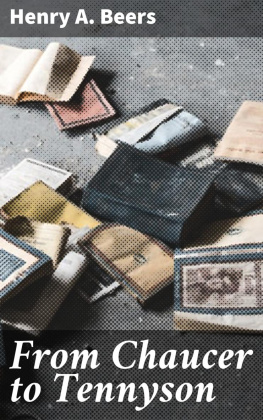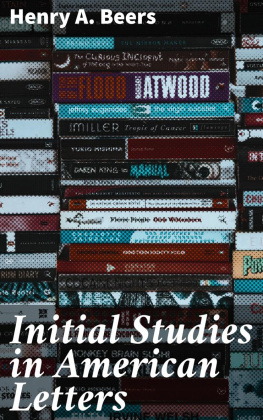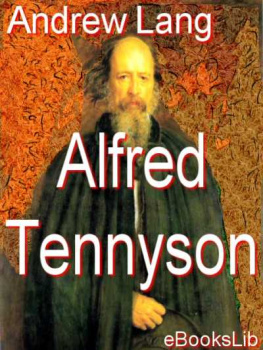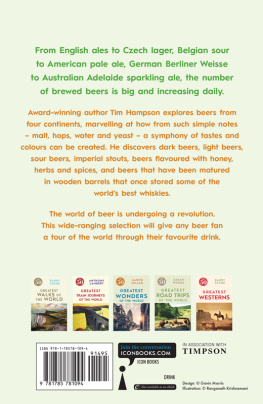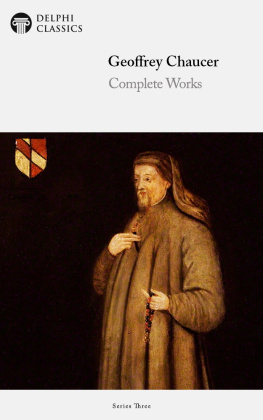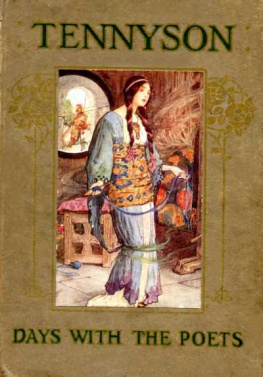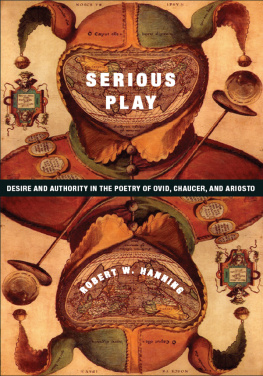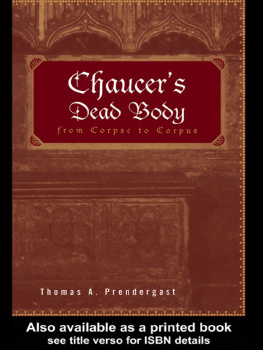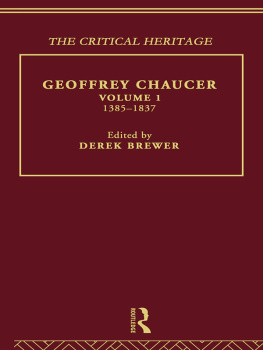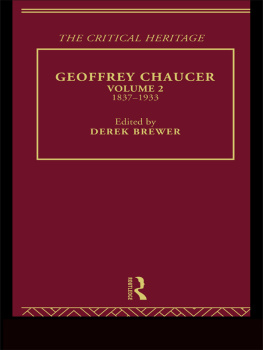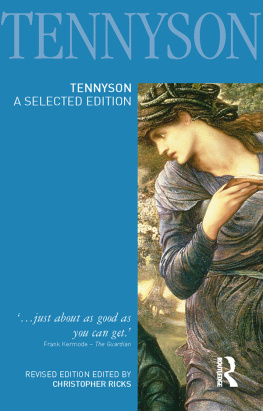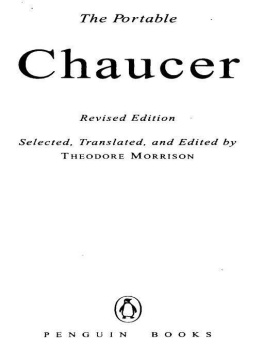CHAPTER I.
Table of Contents
FROM THE CONQUEST TO CHAUCER.
Table of Contents
10661400.
Table of Contents
The Norman conquest of England, in the 11th century, made a break in the natural growth of the English language and literature. The Old English or Anglo-Saxon had been a purely Germanic speech, with a complicated grammar and a full set of inflections. For three hundred years following the battle of Hastings this native tongue was driven from the king's court and the courts of law, from Parliament, school, and university. During all this time there were two languages spoken in England. Norman French was the birth-tongue of the upper classes and English of the lower. When the latter got the better of the struggle, and became, about the middle of the 14th century, the national speech of all England, it was no longer the English of King Alfred. It was a new language, a grammarless tongue, almost wholly stripped of its inflections. It had lost half of its old words, and had filled their places with French equivalents. The Norman lawyers had introduced legal terms; the ladies and courtiers words of dress and courtesy. The knight had imported the vocabulary of war and of the chase. The master-builders of the Norman castles and cathedrals contributed technical expressions proper to the architect and the mason. The art of cooking was French. The naming of the living animals, ox, swine, sheep, deer, was left to the Saxon churl who had the herding of them, while the dressed meats, beef, pork, mutton, venison, received their baptism from the table-talk of his Norman master. The four orders of begging friars, and especially the Franciscans or Gray Friars, introduced into England in 1224, became intermediaries between the high and the low. They went about preaching to the poor, and in their sermons they intermingled French with English. In their hands, too, was almost all the science of the day; their medicine, botany, and astronomy displaced the old nomenclature of leechdom, wort-cunning and star-craft. And, finally, the translators of French poems often found it easier to transfer a foreign word bodily than to seek out a native synonym, particularly when the former supplied them with a rhyme. But the innovation reached even to the commonest words in every-day use, so that voice drove out steven, poor drove out earm, and color, use, and place made good their footing beside hue, wont, and stead. A great part of the English words that were left were so changed in spelling and pronunciation as to be practically new. Chaucer stands, in date, midway between King Alfred and Alfred Tennyson, but his English differs vastly more from the former's than from the latter's. To Chaucer, Anglo-Saxon was as much a dead language as it is to us.
The classical Anglo-Saxon, moreover, had been the Wessex dialect, spoken and written at Alfred's capital, Winchester. When the French had displaced this as the language of culture, there was no longer a "king's English" or any literary standard. The sources of modern standard English are to be found in the East Midland, spoken in Lincoln, Norfolk, Suffolk, Cambridge, and neighboring shires. Here the old Anglian had been corrupted by the Danish settlers, and rapidly threw off its inflections when it became a spoken and no longer a written language, after the Conquest. The West Saxon, clinging more tenaciously to ancient forms, sank into the position of a local dialect; while the East Midland, spreading to London, Oxford, and Cambridge, became the literary English in which Chaucer wrote.
The Normans brought in also new intellectual influences and new forms of literature. They were a cosmopolitan people, and they connected England with the Continent. Lanfranc and Anselm, the first two Norman archbishops of Canterbury, were learned and splendid prelates of a type quite unknown to the Anglo-Saxons. They introduced the scholastic philosophy taught at the University of Paris, and the reformed discipline of the Norman abbeys. They bound the English Church more closely to Rome, and officered it with Normans. English bishops were deprived of their sees for illiteracy, and French abbots were set over monasteries of Saxon monks. Down to the middle of the 14th century the learned literature of England was mostly in Latin, and the polite literature in French. English did not at any time altogether cease to be a written language, but the extant remains of the period from 1066 to 1200 are few and, with one exception, unimportant. After 1200 English came more and more into written use, but mainly in translations, paraphrases, and imitations of French works. The native genius was at school, and followed awkwardly the copy set by its master.
The Anglo-Saxon poetry, for example, had been rhythmical and alliterative. It was commonly written in lines containing four rhythmical accents and with three of the accented syllables alliterating.
Reste hine th rm-heort; rced hlifade
Gep and gld-fh, gst inne swf.
Rested him then the great-hearted; the hall towered
Roomy and gold-bright, the guest slept within.
This rude, energetic verse the Saxon scp had sung to his harp or glee-beam, dwelling on the emphatic syllables, passing swiftly over the others, which were of undetermined number and position in the line. It was now displaced by the smooth metrical verse with rhymed endings, which the French introduced and which our modern poets use, a verse fitted to be recited rather than sung. The old English alliterative verse continued, indeed, in occasional use to the 16th century. But it was linked to a forgotten literature and an obsolete dialect, and was doomed to give way. Chaucer lent his great authority to the more modern verse system, and his own literary models and inspirers were all foreign, French or Italian. Literature in England began to be once more English and truly national in the hands of Chaucer and his contemporaries, but it was the literature of a nation cut off from its own past by three centuries of foreign rule.
The most noteworthy English document of the 11th and 12th centuries was the continuation of The Anglo-Saxon Chronicle. Copies of these annals, differing somewhat among themselves, had been kept at the monasteries in Winchester, Abingdon, Worcester, and elsewhere. The yearly entries are mostly brief, dry records of passing events, though occasionally they become full and animated. The fen country of Cambridge and Lincolnshire was a region of monasteries. Here were the great abbeys of Peterborough and Croyland and Ely minster. One of the earliest English songs tells how the savage heart of the Danish king Cnut was softened by the singing of the monks in Ely.
Merie sungen muneches binnen Ely
Tha Cnut chyning reu ther by;


